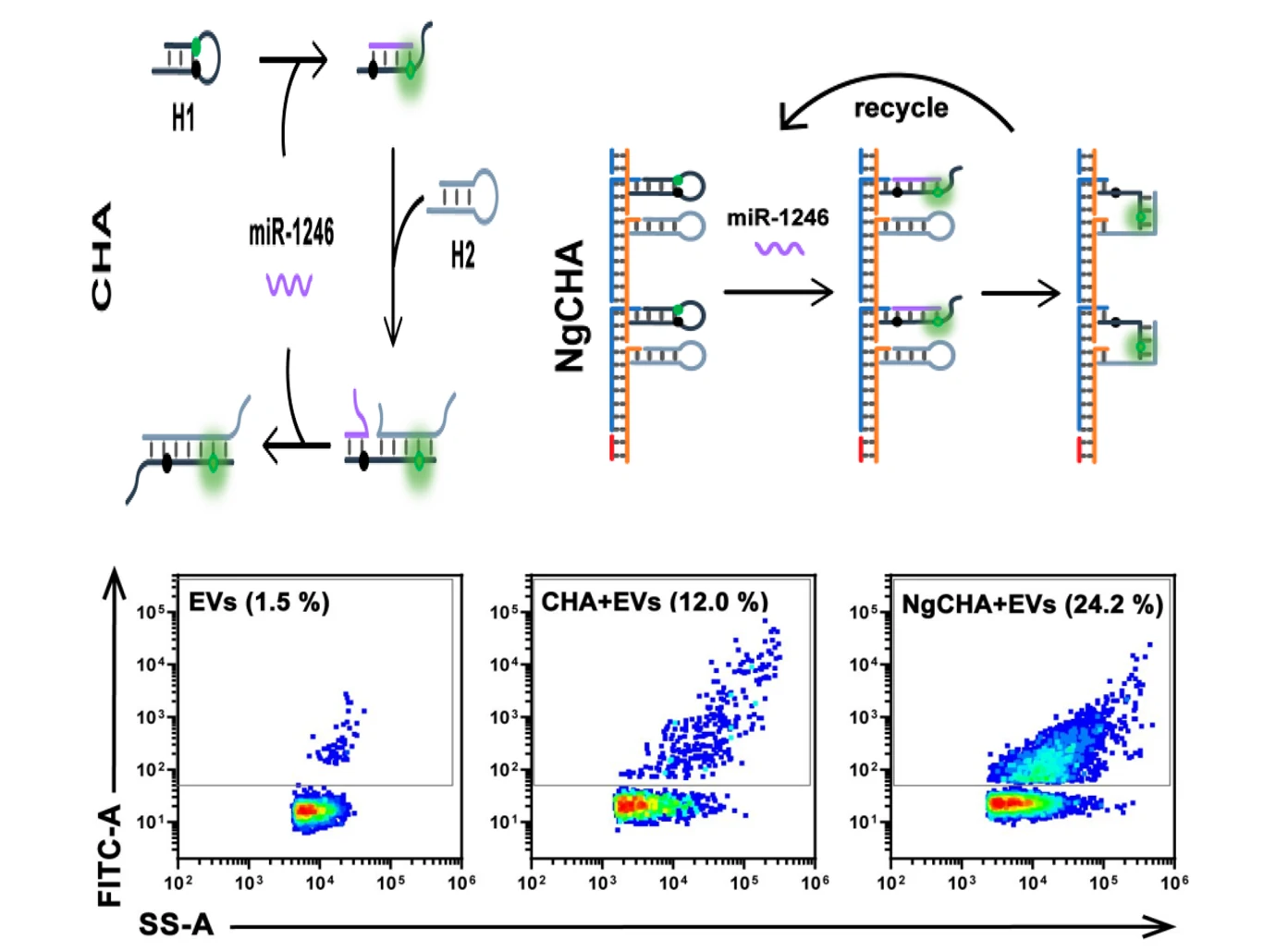Breast cancer
Author: admin Date: February 21, 2024
Extracellular vesicle-associated miRNAs (EV-miRNAs) are emerging as a new type of noninvasive biomarker for disease diagnosis. Their relatively low abundance, however, makes accurate detection challenging. In this article, the authors designed a DNA nanowire guided-catalyzed hairpin assembly (NgCHA) nanoprobe for profiling EV-miRNAs. NgCHA showed high penetrability to EVs, which allowed rapid delivery of the probes into EVs. In the presence of targeted miRNAs within EVs, a fluorescent signal could be generated and amplified by confining the catalytic hairpin assembly system within the nanowires, thus greatly enhancing the analytical sensitivity. In the study, co-localisation analysis of NgCHA and EVs was performed using the Flow NanoAnalyzer to confirm that NgCHA enters the EVs lumen and generates a fluorescent signal. The platform is highly sensitive, cost-saving and simple to use compared to existing methods. Therefore, it has applications for noninvasive diagnosis of cancer.

Figure 1. Colocalization analysis of NgCHA labeling positivity and EVs
The Flow NanoAnalyzer can achieve simultaneous detection of the scattering and fluorescence signal of the particles, i.e. co-localization analysis, with the advantage of high detection sensitivity and speed.
ACS Sensors, 2022, 7(4), 1075-1085.





